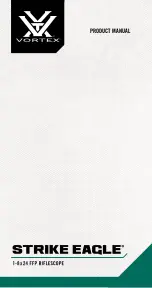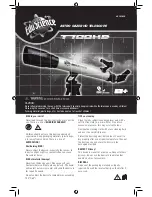
14
Using the setting circles
(The following applies to telescopes using a
single index on the R.A. circle)
The easiest way to use setting circles is to off-
set from a known position. Set the telescope
on an object whose position is known (i.e. a
bright star in a recognisable constellation -
such as listed in the appendix). Unclamp and
turn the R.A. circle so that the its pointer
indexes the observed object's positional hour
and minute. E.g. In figure 6 , the R.A. circle
has been set to indicate that the initial object
has a listed position of 5 hours 40 minutes.
(The declination circle should read the
object's declination correctly if the polar axis
alignment has been maintained.) It is now
only necessary to move the telescope in both
axes until the R.A. and Declination pointers
index the new object's position.
E.g. In figure 7 , the telescope has been
moved to a new object having an R.A. of 7
hours 30 minutes. If the 'target' is not visible,
delicate 'sweeping' with a low power eyepiece
should bring it into view.
Appendix
Most good star atlases will list the R.A. and Dec. co-ordinates of the principle stars and interesting objects
within each constellation. Below is a list of easily found stars, at least one of which should be visible at
any one time for use as starting points.
Constellation
Star Right Ascension
Declination
Spring
Bootes
Arcturus (
α
Boötis) 14h 13.4m +19˚ 27'
Virgo
Spica (
α
Virginis)
13h 22.6m - 10˚ 54'
Leo
Regulus (
α
Leonis) 10h 05.7m +12˚ 13'
Summer
Aquila
Altair (
α
Aquilae)
19h 48.3m +8˚ 44'
Cygnus
Deneb (
α
Cygni)
20h 39.7m +45˚ 06'
Lyra
Vega (
α
Lyrae)
18h 35.2m +38˚ 44'
Autumn
Perseus
Algenib (
α
Persei)
3h 20.7m
+49˚ 41'
Cassiopea
Schedir (
α
Cassiopeiae) 0h 37.7m +56˚ 16'
Pegasus
Markab (
α
Pegasi)
23h 02.3m +14˚ 56'
Winter
Canis Major
Sirius (
α
Canis Majoris)
6h 42.9m
-16˚ 39'
Orion
Betelguese (
α
Orionis) 5h 52.5m
+7˚ 24'
Auriga
Capella (
α
Aurigae)
5h 13.0m
+45˚ 57'
Taurus
Aldebaren (
α
Tauri)
4h 33.0m
+16˚ 25'
Figure 6
Figure 7



































